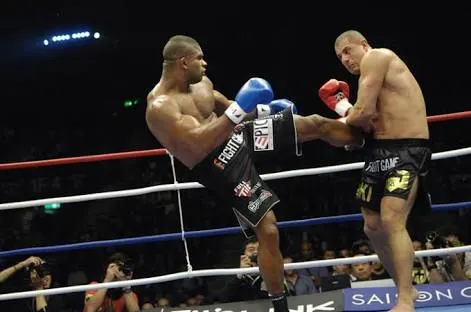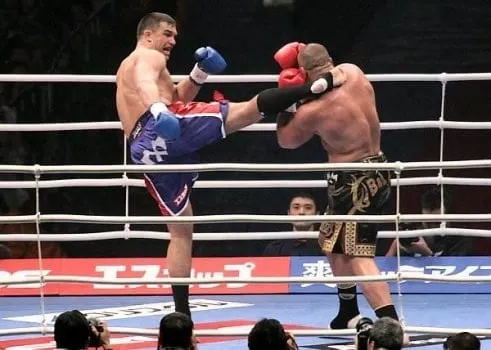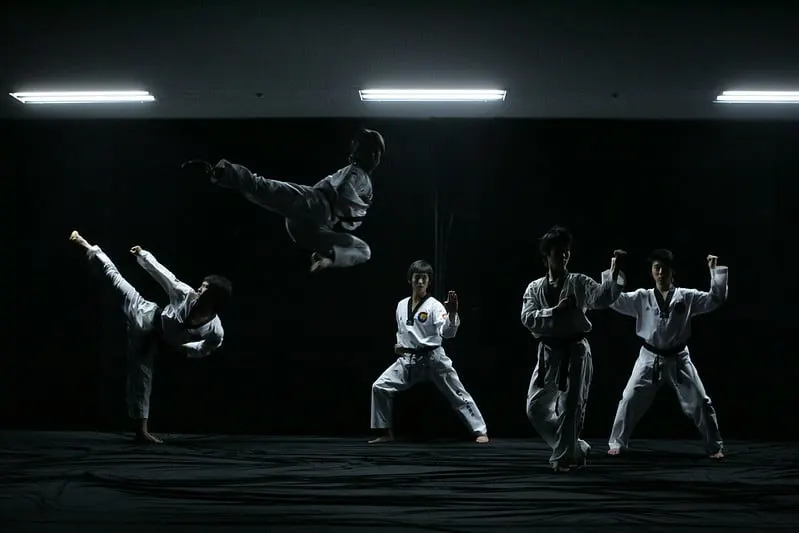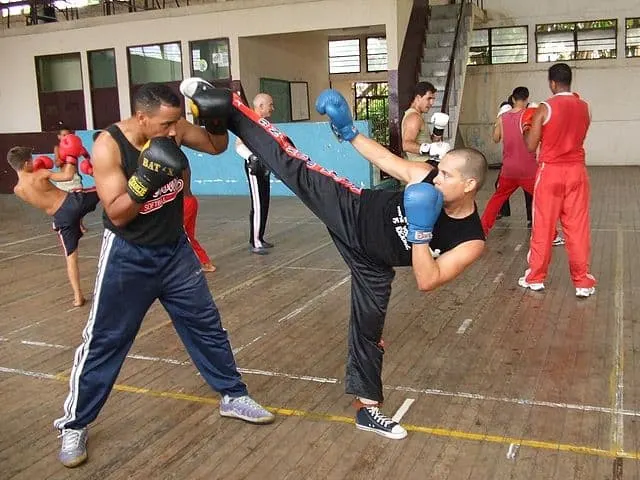Dutch kickboxing emerged in the 1970s in the Netherlands and it is a mix of Muay Thai, Kyokushin, and western boxing techniques. It differs from other styles because the emphasis is on non-stop forward pressure, high output of punches, and low kicks. If a kickboxer is using punches far more than kicks in a fight, that fighter is probably trained in Dutch Style.
STRIKING ARTS
K-1 is the kickboxing promotion that emerged in 1993 in Japan with the idea of finding out which striking martial art is the best. The letter “K” stands for karate, Kung Fu, kickboxing, and Kempo. K-1 was so popular that the “K-1” set of rules later became the official kickboxing style.
Taekwondo skills alone aren’t effective in MMA, because it is regarded as too one-dimensional. It is limited almost entirely to an array of different kicks. Taekwondo techniques must be combined with another discipline in order for an MMA fighter to succeed in a fight.
Savate is a French developed style of kickboxing that originated as a form of streetfighting. The style uses both hands and feet as weapons, but the kicks can only be executed with the feet. The use of shins or knees is not allowed in the Savate fighting style. Both high and low kicks are used.
There are five major kickboxing styles: Muay Thai, Dutch kickboxing, Full Contact Karate, Savate, and Sanda. What distinguishes each kickboxing style from the other kickboxing styles is the rules, which explain how you can strike and where you are allowed to strike.
The emphasis differs between Taekwondo and kickboxing. Taekwondo is a martial art that emphasizes kicks, with hand strikes serving as a secondary weapon. In contrast, kickboxing emphasizes the use of all limbs as weapons, such as kicks, punches, and knee strikes.






